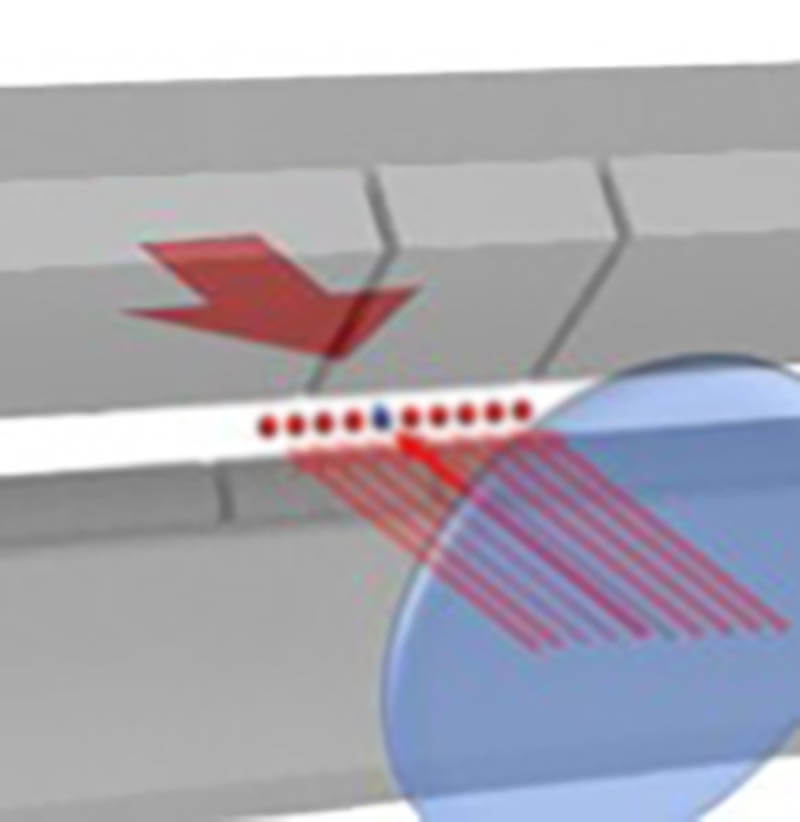Research

Digital computers currently in use represent information as a combination of the numbers "0" and "1" and process information by computing and transmitting these numbers. The unit of information represented by these "0" and "1" is called a bit. Physically, for example, "0" and "1" correspond to the state in which electric charge is accumulated in a capacitor and the state in which no charge is accumulated in a capacitor.
On the other hand, a quantum computer can use not only the states corresponding to "0" and "1" but also the "superposition" of these states. This superposition state does NOT correspond to a capacitor with a charge halfway (e.g., half full) in the previous example. This "superposition" is a phenomenon unique to quantum mechanics and should be interpreted as the simultaneous existence of states that actually correspond to "0" and "1". This mysterious phenomenon, which even made Einstein doubt the validity of quantum mechanics, has now been confirmed by countless experiments and has become a well-established concept. The unit of information using such superposition is called a qubit.
Qubits make it possible to represent information in parallel. For example, if there are two bits in a conventional digital computer, only one of "00," "01," "10," or "11" can be realized at a given moment, but if there are two qubits, all of "00," "01," "10," and "11" can exist simultaneously. A simple comparison of the difference in the amount of information in this case is 1:4. As the number of bits increases, this difference becomes larger and larger with the ratio doubling at every bit. Therefore, it is believed that quantum computers can represent exponentially larger amounts of information than conventional digital computers. On the other hand, when the results of a quantum computer's calculations are to be retrieved in a human-readable form, the information must be reduced from qubits to ordinary bits. Therefore, a quantum computer cannot perform many different calculations in a simple parallel fashion and retrieve all of the results. Instead, the results of the calculations must be successfully reduced to bits while utilizing superposition states in the calculation process. Several such algorithms have actually been discovered, and quantum computers are known to significantly outperform digital computers on certain problems.
Ion trapping is a technique for spatially capturing and arranging individual atoms. By ionizing the atoms, their motion can be controlled and limited by electricity or magnetism. In addition, with the use of lasers, the pressure of light can be used to reduce the speed of the ion motion. This is called laser cooling. As a result, it is possible to almost completely stop the ions and arrange them in a regular pattern in the ion trap (left photo).

Ions captured in vacuum by ion traps and cooled by laser cooling are naked atoms isolated from the external environment. Their behavior is in excellent agreement with the predictions of quantum mechanics. Therefore, it is possible to create high-quality qubits using such ions. In fact, research on quantum computers using ion traps has been ongoing for more than 30 years and has yielded many important breakthroughs. In recent years, some companies have begun to offer cloud services that enable remote use of ion-trap quantum computers. On the other hand, it is also true that many challenges must be overcome in order to increase the number of qubits that ion-trap quantum computer can handle. We are working towards solving these problems in order to further advance ion-trap quantum computers.
Research projects
Principal Investigator: Hiroki Takahashi(OIST), Alto Osada(University of Tokyo)
We research the interconnection of ions captured in spatially separated ion traps using photons. This will make it possible to extend quantum computers by connecting modular ion traps together.

Principal Investigator: Atsushi Noguchi(University of Tokyo)
We are developing a technique for controlling the quantum state of trapped ions using microwaves amplified by a superconducting circuit to break down the accuracy barrier of quantum control by laser light, which has been used for ion trapping.

Principal Investigator: Kenji Toyoda(Osaka University)
One degree of freedom of the quantum oscillation of an ion can store more information than an ordinary qubit. We aim to use this information capacity to achieve error correction.

Principal Investigator: Kazuhiro Hayasaka(NICT), Kazuhiko Sugiyama(Kyoto University), Kazumasa Narumi(QST), Utako Tanaka(Osaka University), Kenji Toyoda(Osaka University)
We are conducting research and development aimed at establishing fabrication and evaluation techniques for high-performance ion traps and implementing automation and remote operation techniques that are essential for ion trap quantum computer cloud computing.

Principal Investigator: Shiyoshi Yokoyama(Kyushu University), Alto Osada(University of Tokyo)
We aim to make ion trap quantum computers stable and easy to mass-produce devices that can be used simply by connecting optical fibers and electrical wiring, through the development of optical circuit elements and research on the integration of optical circuits into ion traps!

Principal Investigator: Shuichi Hasegawa(University of Tokyo)
We aim to expand the scale of quantum computers by freely moving ions, which are used as qubits, through the electromagnetic field generated by microfabricated electrodes. In addition, the simultaneous capture and control of multiple types of ions contributes to extending the computation time.
Principal Investigator: Shinsuke Haze(Osaka University)
We aim to develop a quantum interface between cooled ions and neutral atoms to more flexibly and efficiently extend the number of qubits in ion-trap quantum computers.
